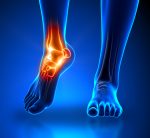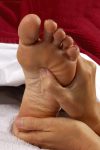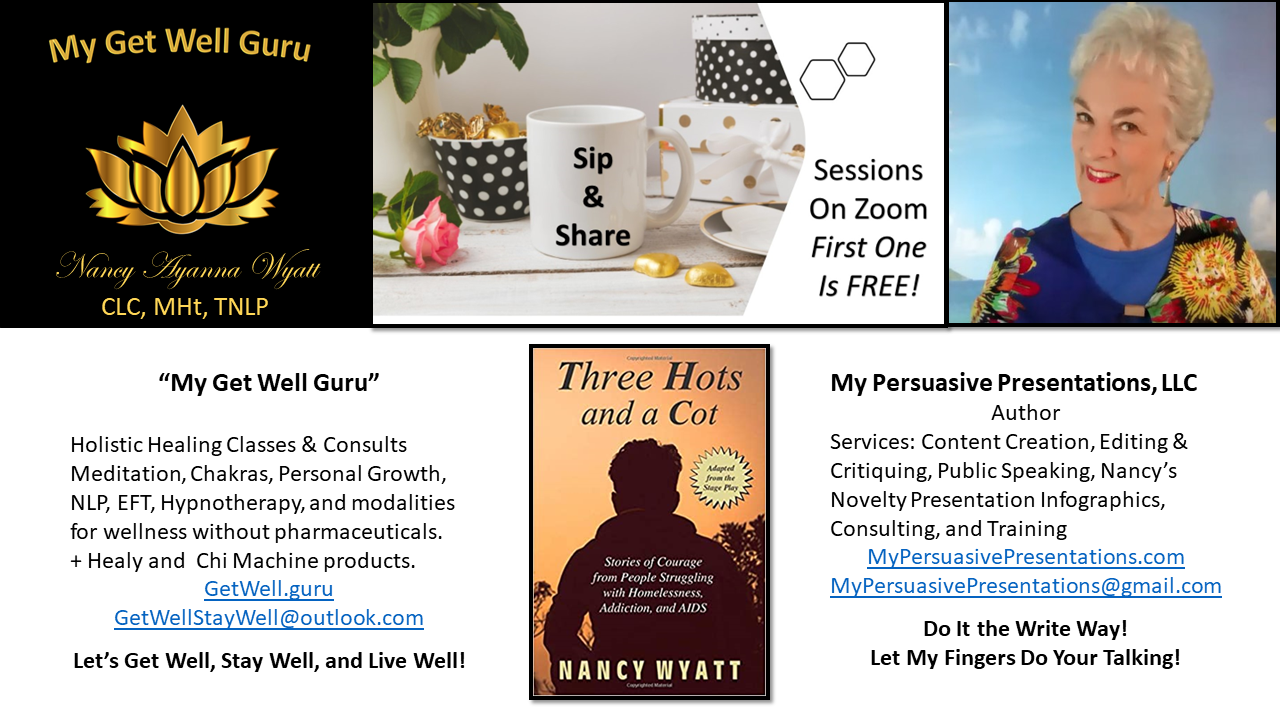When You’re In Acute or Chronic Pain, All You Want Is OUT!
 I recently became certified in a program that helps people deal with chronic illness, which sometimes results in acute or chronic pain, as well. That coursework redirected my thoughts back to ways in which people (including me) have learned to deal with pain so I want to share some ideas with you after I describe the certification I now have, as you might want to attend some of the classes.
I recently became certified in a program that helps people deal with chronic illness, which sometimes results in acute or chronic pain, as well. That coursework redirected my thoughts back to ways in which people (including me) have learned to deal with pain so I want to share some ideas with you after I describe the certification I now have, as you might want to attend some of the classes.
Classes in both subjects (chronic illness and chronic pain) are available for patients throughout the world. The contents are based on many years of a study conducted by Stanford University to determine if its protocol works, and it has for many people. If you would like to learn more (either as a patient or as a trainer), you can follow the links in the paragraph below. If not, just skip down to learn more about pain-handling techniques.
Train the Trainer and Patient Training for Handling Chronic Illness and Pain
Recently, I became certified in a protocol for helping people learn techniques for dealing with chronic illness. The auspices for this training program are the Virginia Department of Health / Prince William Area Agency on Aging and the Self Management Resource Center, LLC which teaches a protocol developed by Stanford University after extensive years devoted to a study on the subject. Once the program is re-established in Prince William County, VA, people will have a chance to sign up for classes that follow the protocol. The train-the-trainers class on handling chronic pain will be held in the future. Contact your local government agencies to learn if they also provide this training to help people in your community…either for patients or for trainers.
 Disclaimer
Disclaimer
The tools and techniques mentioned below are not taken from my certification class. They are a composite of things I’ve tried and suggestions from several other sources, which are cited here. I am not a physician. I neither diagnose conditions nor recommend treatments. In fact, I rarely use medications, and pharmaceutical solutions or surgery are not among these ideas. You should consult your health professional for advice. First, I’ll share the ideas of others and then what I’ve used.
Obscure Factors Influencing How We Experience Chronic Pain
It is well-known that several factors influence who people experience pain. Some of the more subtle influences are:
- brainwave patterns (Your brain can create “pathways” and may re rewired to receive pain signals which, physiologically, are not being sent.)
- genetic makeup (Each person’s body has inborn strengths and vulnerabilities in its systems.)
- emotions (When emotions are heightened by trauma or other circumstances, awareness of pain can become more acute.)
- personality (Effects can vary, but some “personalities” are more likely to ignore their pain in favor of pursuing an action or goal, whereas other “personalities” are more likely to focus on and dwell on sensations of pain.)
- lifestyle (This relates to activity/inactivity, whether your nutritional intake supports or does not support your immune system, what your home, school, and work environments are like, etc.)
- experience (If you’ve been in pain for a long time or acutely, it is easy to unconsciously project pain from the fear that you will have more pain.)
Harvard and the Benson-Henry Institute for Mind-Body Medicine Have Suggestions
 For example, check out this link to a Harvard publication about using your mind to control chronic pain and potentially reduce the need for medication. It refers to the Benson-Henry Institute for Mind-Body Medicine at Harvard-affiliated Massachusetts General Hospital and gives great detail, but I am excerpting suggestions I have used and/or seen duplicated in recommendations from other sources.
For example, check out this link to a Harvard publication about using your mind to control chronic pain and potentially reduce the need for medication. It refers to the Benson-Henry Institute for Mind-Body Medicine at Harvard-affiliated Massachusetts General Hospital and gives great detail, but I am excerpting suggestions I have used and/or seen duplicated in recommendations from other sources.
There are many breathing techniques, so I’ll quote the ones mentioned by these resources with the knowledge that others work equally well. I suggest you read the full article for more complete information.

6 ways to use your mind to control pain
1. Deep breathing. It’s central to all the techniques, so deep breathing is the one to learn first. Inhale deeply, hold for a few seconds, and exhale. To help you focus, you can use a word or phrase to guide you. For example, you may want to breathe in “peace” and breathe out “tension.” There are also several apps for smartphones and tablets that use sound and images to help you maintain breathing rhythms.
2. Eliciting the relaxation response. ….After closing your eyes and relaxing all your muscles, concentrate on deep breathing. When thoughts break through, say “refresh,” and return to the breathing repetition. Continue doing this for 10 to 20 minutes. Afterward, sit quietly for a minute or two while your thoughts return. Then open your eyes and sit quietly for another minute.
3. Meditation with guided imagery. Begin deep breathing, paying attention to each breath. Then listen to calming music or imagine being in a restful environment. If you find your mind wandering, say “refresh,” and call the image back into focus.
4. Mindfulness. Pick any activity you enjoy….Notice every detail of what you are doing and how your senses and emotions are responding. Practice bringing mindfulness to all aspects of your life.
5. Yoga and tai chi. These mind-body exercises incorporate breath control, meditation, and movements to stretch and strengthen muscles. Videos and apps can help you get started. If you enroll in a yoga or tai chi class at a gym or health club, your health insurance may subsidize the cost.
6. Positive thinking
From NetDoctor in the United Kingdom, We Get 7 Tips To Distract From Pain

Do not press, prod or poke
The bigger the movement, the better
Don’t constantly talk about it
Don’t be afraid to exercise
Know the foods that make things worse
Prioritize sleep
Go and have fun.
Counting My Spoons Has More Suggestions
I just found the resource Counting My Spoons. I was intrigued by its name, so I decided to look at what they say about using distractions to counteract chronic pain. It appears, at a glance, that fibromyalgia is a frequent topic, but the suggestions are not limited to that topic. I’ll quote some of their ideas, but I suggest you visit their website for much more info.

10 Ways to Distract Yourself From Pain
1. Focus on your breath – relax and take a deep breath….Try to count to at least 10 on each breath in and each breath out. As you really focus on breathing it’s hard to focus on much else, and you will find that the exhales help you relax. Keep this up as long as you can.
2. Imagine Pain Relief – Imagine that you just got a shot of some great pain reliever in the area where it hurts, focus on how that would feel, and the sensations that would come with it.
3. Focus on a different time – Think back to a time when you were not in pain, when you were enjoying life in such a way that even if you’d felt a twinge of pain you would not have noticed. Try to feel the feelings you had at that time, and really hold onto them.
4. Find something funny – ….They say that laughter is the best medicine
5. Shock yourself – ….find the most shocking thing you can on the internet (or a scary movie) and watch it. Research has shown that looking at something rather bad or shocking can distract you from pain better than looking at more pleasant things.
6. Listen to music
7. Play a game
8. Spend time with friends – especially those who make you laugh
9. Enjoy nature – Get outside if you can (or near a window if you can’t) and enjoy nature. Watch the birds, the squirrels, or the neighbors….It might even be worth installing a bird feeder just to bring more beauty…, giving you something to focus on.
10. Make some friends online – Twitter, Facebook, and online forums can be a great distraction, just ask anyone who has ever stepped foot into any of them.
What Else Have I Tried That Worked?
 1, 2, 3, and 4. Both acupuncture and acupressure have worked well for me, as have various forms of massage therapy and reflexology.
1, 2, 3, and 4. Both acupuncture and acupressure have worked well for me, as have various forms of massage therapy and reflexology.

(The advantage of acupressure and reflexology is that I can do it myself whenever I want to.)
 Of course, one can massage the self (with or without aromatherapy + the use of essential oils) except for unreachable areas; but, I find it much more beneficial to have a practitioner perform a full body massage. Otherwise, the person in pain is soothing the area being massaged by exerting force or tension with the hand conducting the movements, which does not allow the body to fully relax. The greater the tension, the greater the pain.
Of course, one can massage the self (with or without aromatherapy + the use of essential oils) except for unreachable areas; but, I find it much more beneficial to have a practitioner perform a full body massage. Otherwise, the person in pain is soothing the area being massaged by exerting force or tension with the hand conducting the movements, which does not allow the body to fully relax. The greater the tension, the greater the pain.
 In addition, massage therapists are certified and have studied anatomy and physiology. They know specific techniques for dealing with various areas of the body. Pain radiates, so where you feel it might not be the original source. They can help you find the origin.
In addition, massage therapists are certified and have studied anatomy and physiology. They know specific techniques for dealing with various areas of the body. Pain radiates, so where you feel it might not be the original source. They can help you find the origin.
5. Depending on the source of pain and whether your body is in correct alignment, the services of a chiropractor may help.
6.  In addition, as a Reiki Master, I have given myself Reiki treatments and also have paid for sessions from other practitioners. Learn More About Reiki here.
In addition, as a Reiki Master, I have given myself Reiki treatments and also have paid for sessions from other practitioners. Learn More About Reiki here.
7.  I’ve also undergone hypnosis and practiced self-hypnosis. As a certified hypnotherapist, I also create HypnoMeditations which can be recorded and can be played once or looped for hours, and that is an aid for many.
I’ve also undergone hypnosis and practiced self-hypnosis. As a certified hypnotherapist, I also create HypnoMeditations which can be recorded and can be played once or looped for hours, and that is an aid for many.
8. As for back pain, nothing helps me more than using the chi machine (aerobic exerciser). I have to do a lot of heavy lifting, and I might use it 3 or 4 times a day when that’s the work I must do all day, even though that is not its primary purpose.
9. There also are a number of “meditation music” choices that change (and slow) the brainwave hertz (cycles per second). They can have a calming effect which may ease pain and help one think about other, more pleasant things.
______________________________________________________________________
Find the Music and Sound Wave Energy Healing
I have found YouTube videos to be excellent in this regard. The Solfeggio Frequencies are great pieces to listen to in the background as you go about your activities.
I hope these ideas are helpful to you, and I’d love to hear from you if you have other techniques that have brought you relief from chronic pain.
______________________________________________________________________
Let’s Get Well, Stay Well, and Live Well Together Now!
